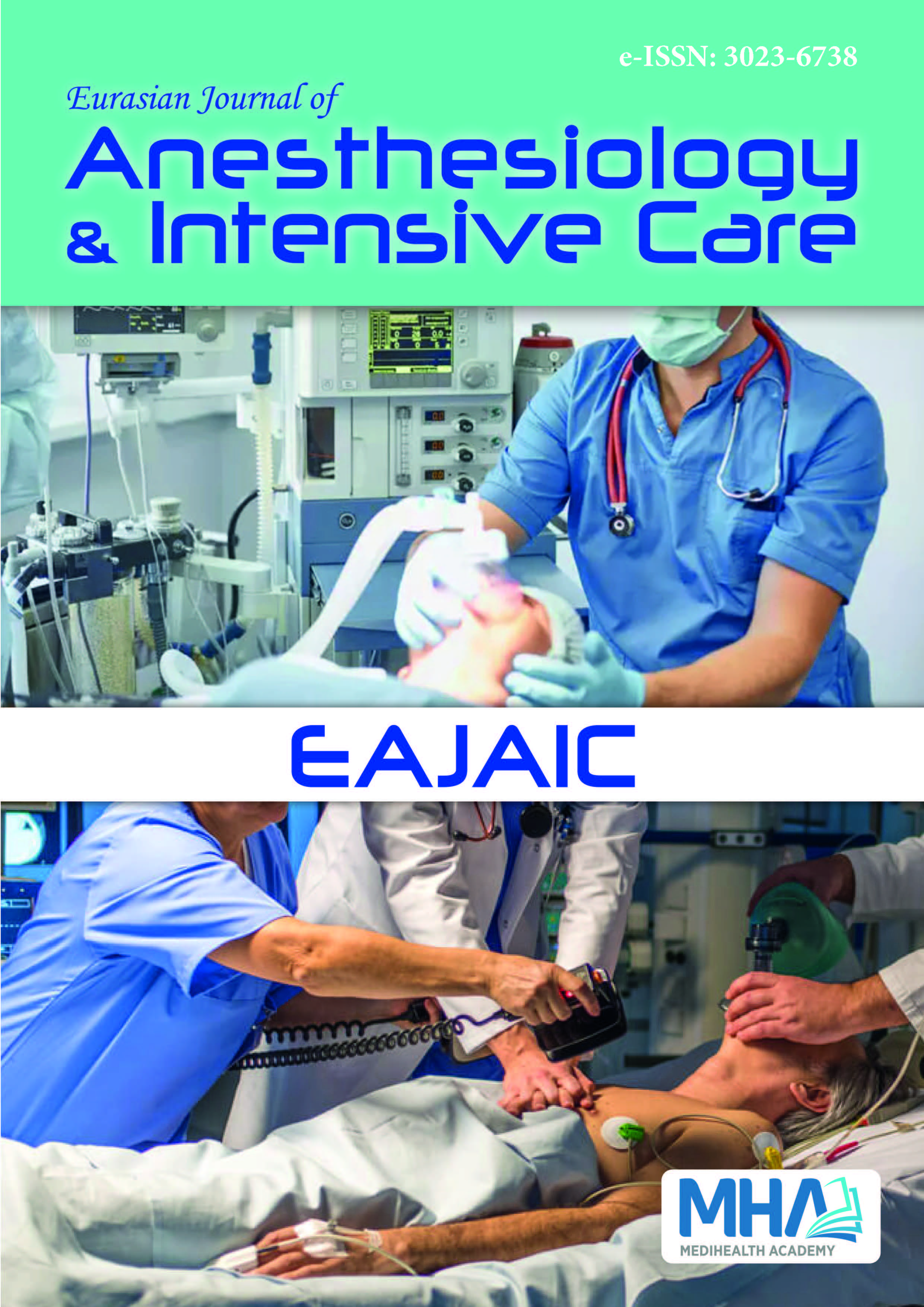1. Wang X, Pan C, Li J, et al. Prospective comparison of local anesthesiawith general or spinal anesthesia in patients treated with microscopicvaricocelectomy. J Clin Med. 2022;11(21):6397
2. Doğruer K, Köprülü AŞ, Karpat H. Summary book. A new perspectiveon sedation; anxiolysis, patient-controlled sedation. Intensive CareMed. 1996;42(2):89-90.
3. Mackenzie N, Grant IS. Propofol for intravenous sedation. Anaesthesia.1987;42(1):3-6. doi: 10.1111/j.1365-2044.1987.tb02936
4. Sutcliffe N. Sedation during loco-regional anaesthesia. ActaAnaesthesiol Belg. 2000;51(2):153-156.
5. Rêgo MM, Watcha MF, White PF. The changing role of monitoredanesthesia care in the ambulatory setting. Anesth Analg. 1997;85(5):1020-1036.
6. Avramov MN, Smith I, White PF. Interactions between midazolam andremifentanil during monitored anesthesia care. Anesthesiology. 1996;85(6):1283-1289. doi: 10.1097/00000542-199612000-00009
7. Nagengast FM. Sedation and monitoring in gastrointestinal endoscopy.Scand J Gastroenterol Suppl. 1993;200(1):28-32. doi: 10.3109/00365529309101572
8. Grattidge P. Patient-controlled sedation using propofol in day surgery.Anaesthesia. 1992;47(8):683-685.
9. Chumbley GM, Hall GM, Salmon P. Why do patients feel positive aboutpatient-controlled analgesia? Anaesthesia. 1999;54(4):386-389. doi: 10.1046/j.1365-2044.1999.00836.x
10. Folstein MF, Folstein SE, McHugh PR. Mini mental state. A practicalmethod for grading the cognitive state of patients for the clinician. JPsychiatr Res. 1975;12(3):189-198. doi: 10.1016/0022-3956(75)90026-6
11. Osborne GA, Rudkin GE, Jarvis DA, et al. Intra-operative patient-controlled sedation and patient attitude to control. A crossovercomparison of patient preference for patient-controlled propofol andpropofol by continuous infusion. Anaesthesia. 1994;49(4):287-292.
12. Fisher NC, Bailey S, Gibson JA. A prospective, randomized controlledtrial of sedation vs. no sedation in outpatient diagnostic uppergastrointestinal endoscopy. Endoscopy. 1998;30(1):21-24. doi: 10.1055/s-2007-993723
13. Bethune DW. Test of delayed memory recall suitable for assessingpostoperative amnesia. Anaesthesia. 1981;36(10):942-948. doi: 10.1111/j.1365-2044.1981.tb08652.x
14. Di Palo MT. Rating satisfaction research: is it poor, fair, good, verygood, or excellent? Arthritis Care Res. 1997;10(6):422-430. doi: 10.1002/art.1790100610. PMID: 9481234.
15. Galletly DC, Short TG, Forrest P. Patient administered anxiolysis-apilot study. Anaesth Intensive Care. 1989 May;17(2):144-50. doi: 10.1177/0310057X8901700204
16. Kerschbaum G, Altmeppen J, Funk W, Taeger K. Patient-controlledanalgesia. PCA in a three year old child after traumatic amputation.Anaesthesist. 1998;47(3):238-242.
17. Herrick IA, Gelb AW, Nichols B, Kirkby J. Patient-controlled propofolsedation for elderly patients: safety and patient attitude toward control.Can J Anaesth. 1996;43(10):1014-1018
18. Mazanikov M, Pöyhia R. Patient controlled sedation. Duodecim. 2011;127(9):883-889.
19. Rudkin GE, Osborne GA, Curtis NJ. Intra-operative patient-controlledsedation. Anaesthesia. 1991;46(2):90-92.
20. Güneş S, Türktan M, Güleç ÜK, Hatipoğlu Z, Ünlügenç H, Işık G.The comparison of patient-controlled remifentanil administered bytwo different protocols (bolus and bolus+infusion) and intramuscularmeperidine for labor analgesia. Turk J Anaesthesiol Reanim. 2014;42(5):264-269.
21. Mazanikov M, Udd M, Kylanpaa L, et al. Patient-controlled sedationwith propofol and remifentanil for ERCP: a randomized, controlledstudy. Gastrointest Endosc. 2011;73(2):260-266.
22. Veselis RA, Reinsel RA, Feshchenko VA, Wronski M. The comparativeamnestic effects of midazolam, propofol, thiopental, and fentanyl atequisedative concentrations. Anesthesiology. 1997;87(4):749-764. doi:10.1097/00000542-199710000-00007
23. Smith I, Avramov MN, White PF. A comparison of propofol andremifentanil during monitored anesthesia care. J Clin Anesth.1997;9(2):148-154. doi: 10.1016/S0952-8180(96)00240-1
24. Gold MI, Watkins WD, Sung YF, et al. Remifentanil versusremifentanil/midazolam for ambulatory surgery during monitoredanesthesia care. Anesthesiology. 1997;87(1):51-57.
25. White PF. Clinical uses of intravenous anesthetic and analgesicinfusions. Anesth Analg. 1989;68(2):161-171.
26. Medina HJ, Galvin EM, Dirckx M, et al. Remifentanil as a single drugfor extracorporeal shock wave lithotripsy: a comparison of infusiondoses in terms of analgesic potency and side effects. Anesth Analg.2005;101(2):365-370. doi: 10.1213/01.ANE.0000159379.54705.84
27. Puchner W, Egger P, Pühringer F, et al. Evaluation of remifentanil assingle drug for awake fiberoptic intubation. Acta Anaesthesiol Scand.2002;46(4):350-354. doi: 10.1034/j.1399-6576.2002.460403.x
28. Jones R, Pegrum A, Stacey RG. Patient-controlled analgesia usingremifentanil in the parturient with thrombocytopaenia. Anaesthesia.1999;54(5):461-465.
29. Sa Rego MM, Inagaki Y, White PF. Remifentanil administrationduring monitored anesthesia care: are intermittent boluses an effectivealternative to a continuous infusion? Anesth Analg. 1999;88(3):518-522.
30. Choi J, Choi H, Kang HS, Kang H. Comparison of alfentanil andremifentanil for the use of patient controlled sedation under localanesthesia during ear, nose and throat surgery. Korean J Anesthesiol.2009;56(5):507-512.
31. Joo JD, In JH, Kim DW, et al. The comparison of sedation quality, sideeffect and recovery profiles on different dosage of remifentanil patient-controlled sedation during breast biopsy surgery. Korean J Anesthesiol.2012;63(5):431-435.
32. Thorbiörnson A, Charvalho P, Gupta A, Stjernholm YV. Durationof labor, delivery mode and maternal and neonatal morbidity afterremifentanil patient-controlled analgesia compared with epiduralanalgesia. Eur J Obstet Gynecol Reprod Biol X. 2020;7(6):100106.

